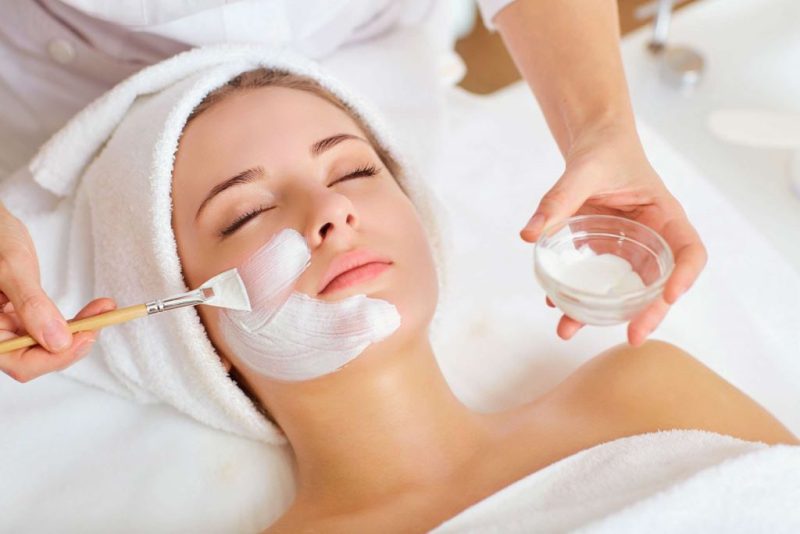Think of your skin as a canvas that requires regular refreshing to showcase its true vibrancy. Exfoliation is the key to unlocking this radiance, shedding the dull, lifeless layers and unveiling the fresh, glowing complexion beneath. Research from Outback Organics emphasizes the importance of exfoliation before waxing, highlighting how it helps in lifting hair from the root, preventing breakage, and improving the overall outcome of the treatment. Whether you’re preparing for a luxurious spa day or simply seeking to elevate your skincare routine, exfoliation is an essential step that should never be overlooked. Let’s dive into it. We suggest visiting the Best Facials in Manhattan NY.
Why is Exfoliation Crucial?
Our skin is a remarkable organ, constantly renewing itself by shedding dead cells and generating new ones. However, this natural process can sometimes become sluggish, leading to a buildup of those lifeless cells on the surface. This buildup not only dulls the appearance of our complexion but also hinders the proper absorption of skincare products and can contribute to clogged pores and blemishes. Exfoliation gently sloughs off this accumulation, promoting cell turnover and allowing your skin to breathe and rejuvenate.
The Benefits of Exfoliating
Exfoliation offers a multitude of benefits that extend far beyond a simple surface glow. By removing the outermost layer of dead cells, it:
- Improves Skin Texture: Exfoliation smooths the skin’s surface, minimizing the appearance of fine lines, wrinkles, and roughness, leaving your skin with a velvety softness.
- Enhances Product Absorption: With the removal of the dead cell barrier, your skincare products can penetrate deeper, maximizing their effectiveness and delivering optimal nourishment.
- Reduces Hyperpigmentation: Regular exfoliation helps fade away stubborn dark spots and uneven skin tone, promoting a more radiant and even complexion.
- Decongests Pores: By sloughing off the buildup of dead cells, exfoliation helps prevent pores from becoming clogged, reducing the likelihood of breakouts and blemishes.
- Boosts Circulation: The gentle massaging motion of exfoliation stimulates blood flow, bringing a healthy flush to your complexion and promoting a natural glow. Visit the Best Anti Aging Facials in Manhattan to get the best care for anti aging.
Choosing the Right Exfoliant
With a plethora of exfoliating products available, it’s crucial to select the one that suits your skin type and concerns. Here’s a breakdown of the most common options:
- Physical Exfoliants: These include scrubs and brushes that use small particles or bristles to manually slough off dead cells. Examples include sugar, salt, and microbeads. While effective, these can be harsh on sensitive skin if used excessively.
- Chemical Exfoliants: These utilize gentle acids, such as alpha-hydroxy acids (AHAs) like glycolic acid and lactic acid, or beta-hydroxy acids (BHAs) like salicylic acid, to dissolve the bonds between dead cells, promoting their natural shedding. Chemical exfoliants are generally gentler and less abrasive than physical options.
- Enzymes: Derived from natural sources like fruits and grains, enzymatic exfoliants gently dissolve the “glue” that holds dead cells together, ensuring a gentle yet effective exfoliation.
Personalizing Your Exfoliation Routine
The key to successful exfoliation lies in tailoring your routine to your specific skin type and needs. Here’s a general guideline:
For Normal to Dry Skin:
- Opt for gentle, hydrating scrubs or chemical exfoliants with AHAs, like glycolic or lactic acid.
- Exfoliate 1-2 times per week to avoid over-drying your skin.
For Oily or Acne-Prone Skin:
- Salicylic acid (a BHA) is your ally, as it penetrates deep into pores to dissolve oil and debris.
- Incorporate a clay mask or gentle scrub 2-3 times per week for a deep cleanse.
For Sensitive Skin:
- Stick to ultra-gentle enzymes or low-concentration AHAs, like lactic acid.
- Exfoliate no more than once a week, and always follow with a nourishing moisturizer.
For Mature Skin:
- Gentle AHAs and enzymes can help minimze fine lines and boost cell turnover.
- Exfoliate 1-2 times per week, being mindful of over-exfoliation, which can compromise the skin barrier.
Preparing for Your Spa Experience
Now that you’ve mastered the art of exfoliation, it’s time to prepare for your spa appointment. Here are some tips to ensure a seamless and rejuvenating experience:
- Exfoliate 24-48 Hours Before: This allows your skin to recover from the exfoliation process, ensuring a fresh and radiant canvas for your spa treatments.
- Hydrate, Hydrate, Hydrate: After exfoliating, your skin will be thirsty. Drink plenty of water and apply a nourishing moisturizer to keep your skin supple and glowing.
- Avoid Excessive Sun Exposure: Exfoliation can temporarily make your skin more sensitive to the sun’s rays. Limit your time in direct sunlight and apply a broad-spectrum sunscreen before your appointment.
- Communication is Key: Don’t hesitate to discuss your skincare concerns and preferences with your spa esthetician. They can tailor your treatment to your specific needs, ensuring a truly personalized experience.
Conclusion
Exfoliation is a transformative step in your skincare routine, unveiling the radiant, youthful complexion that lies beneath the surface. By understanding your skin type, selecting the right exfoliants, and incorporating them into a consistent routine, you’ll not only prepare your skin for a luxurious spa experience but also cultivate a lasting glow that radiates from within. Embrace the power of exfoliation, and let your natural beauty shine through. Finally, we recommended Best Waxing Centers in Manhattan and Full Body Hair Removal in Manhattan to know more details.




